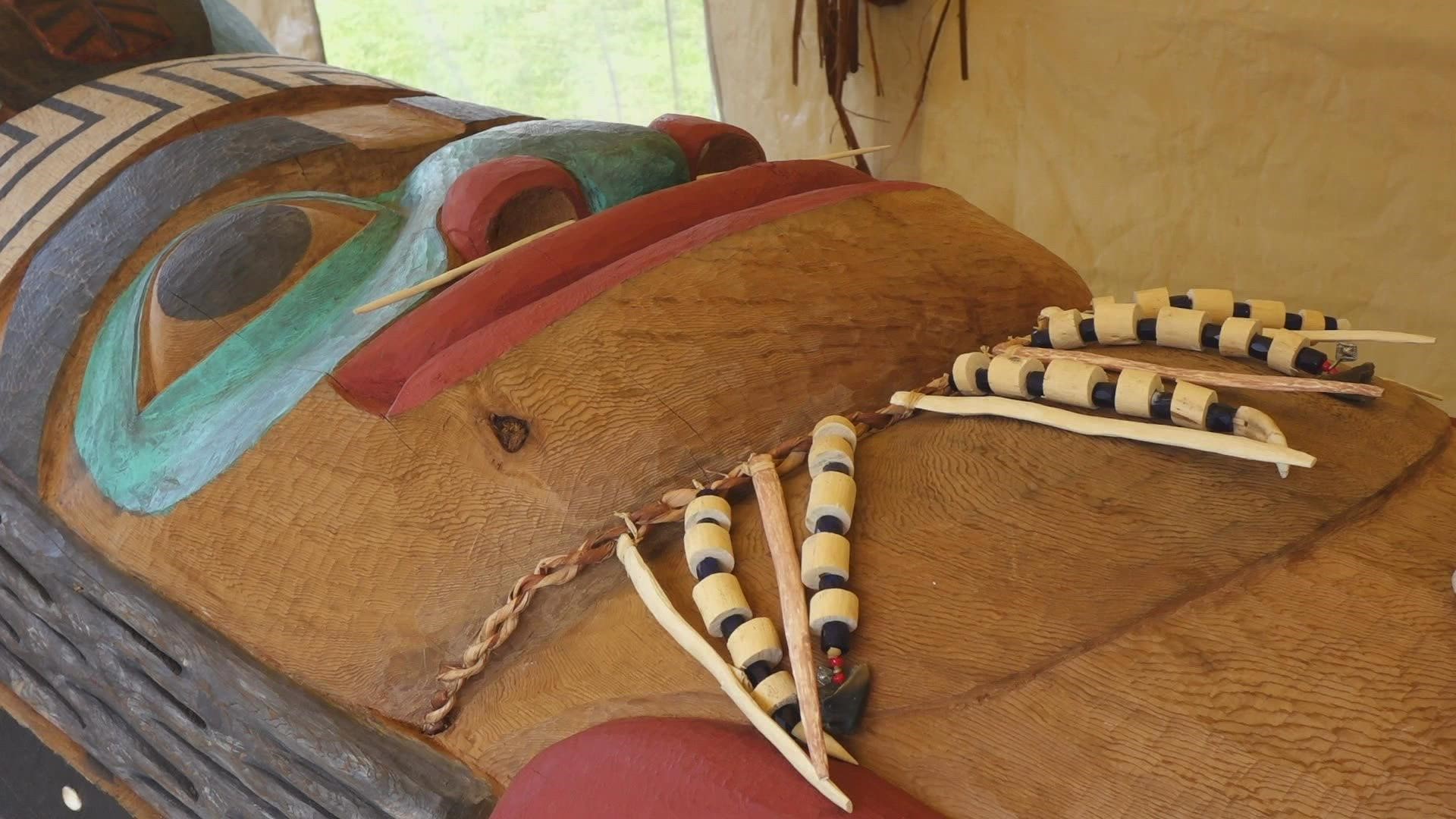EVERETT, Wash. — Fred Fulmer Sr. has been chipping away at his passion project for over a year.
That’s not uncommon in his line of work.
Fulmer said it’s well worth his time to preserve history and preserve his heritage for future generations.
Fulmer is a Tlingit artist who says he’s following in his great grandfather's footsteps as a totem pole carver. The Tlingit are indigenous peoples of the Pacific Northwest Coast of North America.
Fulmer said his inspiration for the totem pole came to him in his dreams.
“My dream was a vision of Alaska about three or four hundred years ago and the idea of honoring my ancestors came to me,” he said.
Fulmer has nearly completed his 16-foot totem pole that has been acquired by the Hoonah Indian Association in Alaska. The Huna Tlingit people have lived in the Southeast Alaska archipelago for many hundreds of years.
“My grandmother lives in Hoonah so that’s personal and the totem will be featured in a new state-of-the-art museum that the tribe is building, which is an honor,” he said.
The cedar log Fulmer used is around 650 years old. He titled his project "The Ancient Ones."
The tedious work is done by hand tools and each wood shaving represents a swing of the arm. Fulmer said native art is a way of communicating and preserving stories through symbolism.
“Native culture is oratory, we didn’t have books and stuff like that and so carving totem poles is a way of recording our history,” he said.
The totem pole features several layers representing tribal ancestors and a shaman standing on the mountain top. Copper shields represent wealth to Natives and Fulmer said he used that symbolism to represent sharing a wealth of knowledge.
“It’s all about honoring our ancestors and suddenly I’m in a position to pass down my knowledge to my son and the next generations,” he said.

